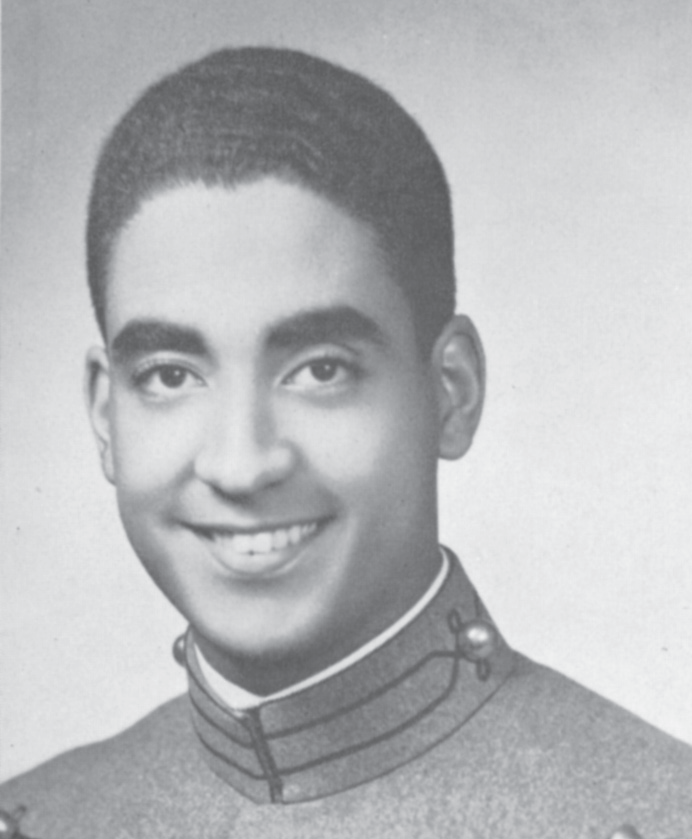On Aug 4, 1932, Hugh Granville Robinson was born to Colonel and Mrs. James H. Robinson in Washington, DC. Young Hugh’s father was a career Army officer, and the family moved together with each new assignment through his childhood years. This background was fantastic experience to have if choosing the life of a professional soldier, for you would be well aware of the challenges that lay ahead.
Hugh graduated from Dunbar High School in the nation’s capitol in 1949 and then spent one year at Williams College in Williamstown, MA. It was during that year that he submitted his application for admission to the United States Military Academy. He was delighted to receive an appointment and began preparation for his military life as a member of the Corps of Cadets with the Class of 1954.
The initial experience of every cadet is a life-changing moment. The term "Beast Barracks" evokes broad smiles, great tales, and a myriad of memories by every member of the corps. Hugh endured it all with his classmates in great humor as the upper classmen honed these civilians into cadet candidates ready for a short appearance on the Plain by the end of their first day as members of the Long Gray Line! Hugh marched with his classmates with pride. Soon he would face a new kind of challenge. He and three other black cadets in the Second Regiment were the first to be affected by a new order. The Military Academy was directed to integrate the Corps of Cadets. Upon entering West Point, these four black cadets were assigned to a room, living together and apart from the other cadets in the Second Regiment. That was to change.
Pat Dyer and Ron Gamble were plebes and members of the Second Regiment. They volunteered to take one of the four black cadets - Hugh Robinson - as a roommate. These three men - Hugh, Pat, and Ron - were roommates for their remaining years at the Academy and always kept in touch throughout their later careers. Hugh became a stalwart member of Company M of the Second Regiment, better known as M-2. He was warmly welcomed by his company mates and became an integral part of all the reunions through the passing years.
While at the Academy Hugh was a "hive" and balanced academics, club memberships and social activities with ease. He achieved the rank of a cadet lieutenant as a firstie and looked forward to graduation so rich with promise. Hugh was commissioned in the Corps of Engineers and was chosen to pursue a degree in civil engineering at the Massachusetts Institute of Technology, which he earned in 1959. He then completed the Harvard Business School Management Program for Executives and was awarded an honorary Doctor of Laws degree from Williams College in Massachusetts. This classmate’s military career spanned across the years and his every effort resulted in new achievements and honors. Hugh had a tour of duty in Korea and held several Army staff positions here in the United States and in France. In 1965 he was appointed the Army Military Aide to President Lyndon B. Johnson. He was the first African American to serve in that position, which he held for the entire tenure of Johnson’s term as president. Hugh valued the fantastic experience of working with the president in that capacity and often referenced it when among his classmates.
Following the White House assignment, Hugh went to Vietnam where he served as deputy group commander of the 45th Engineering Group and commander of the 39th Engineer Battalion. For his service in the war zone he received an Air Medal, a Bronze Star, the Legion of Merit, and an Army Commendation Medal. In 1972 he returned to West Point as the Third Regimental Tactical officer. His job was to develop and train cadets to be future leaders. He was promoted to colonel and reassigned as Commandant of the United States Engineer School at Fort Belvoir, Virginia. In 1978 Hugh was promoted to brigadier general, becoming the Corps of Engineers first African American general officer. Two years later, in 1980, he was promoted to major general and assumed command of the Corps of Engineers Southwestern Division which includes a huge area of responsibility. He held that position until he retired in 1983.
Hugh was now a civilian and joined the corporate world, bringing with him years of expertise from his military leadership. He began this phase of his life in Dallas, TX, with the Southland Corporation as vice president followed by ascendancy to its president. During Hugh’s years in Dallas he brought his own vision to the multiple construction projects that he managed or chaired as an executive officer. His interests were not limited to the field of engineering but reached out to touch, enrich, and change cultural and civic issues. His involvement included the LBJ Foundation, the Dallas Museum of Art, the Dallas Symphony Orchestra, the African American Museum, and several youth organizations. This list included Dallas Promise, which reached out to youth through opportunities for education, enhancement of skills, work ethic, and citizenship.
Hugh’s family—Paula Raymond Robinson (spouse), Colonel (Retired) Hugh G. Robinson Jr. (son), Susan Robinson Wells (daughter), Karen Robinson (their mother), as well as extended family, take consolation in the goals he achieved through tenacity and hope.
Be Thou at Peace.
—Hugh G. Robinson Jr. ’80, son, and his father’s M-2 Companymates

